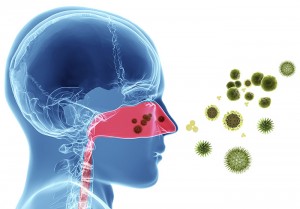
What’s in the air you breathe?
Indoor Air Quality (IAQ) commonly refers to the air quality within and around buildings like homes and offices — especially as it relates to the health and comfort of building occupants. Understanding what IAQ is can help reduce the risk of indoor health issues and concerns. Some health impacts from indoor air pollutants may be experienced quickly, others may take years to show up. Protect yourself by using knowledge of your indoor environment to alleviate concerns and potential issues. Let’s look at the two types of health impacts you may encounter:
Immediate Impacts
- Irritation of the eyes, nose, and throat
- Headaches
- Dizziness
- Fatigue
- Asthma may become aggravated
- Cold-like symptoms.
Some of the above effects due to poor IAQ may show up shortly after a single exposure, or after repeated exposure. A person’s reaction depends on their sensitivity, which obviously varies from person to person. Some people can become sensitized to biological or chemical pollutants after repeated or high level exposures. Others may not. It’s important to note when symptoms do occur, it’s often difficult to distinguish between IAQ issues and colds or other viral diseases. If symptoms fade or are reduced when a person leaves an area, chances are that it’s something in that area causing the problem. Some effects may be made worse by a lack of adequate outdoor air coming into the building or home. They can also be made worse because of heating, cooling, or humidity conditions.
Long-Term Impacts
- Respiratory diseases
- Heart disease
- Cancer.
While pollutants commonly found in indoor air can have many harmful impacts, there is considerable uncertainty about what concentrations or period of exposure are necessary to produce specific health problems.
